Sudmoll
Script error: The module returned a nil value. It is supposed to return an export table.
Trade Island of Sudmoll | |
|---|---|
| Nickname(s): Worlds End Fin della terra | |
| Nation | |
| Constituent Country equivalent | Burgoignesc Overseas Territory Assembly |
| Geographic Designation | Polar Burgundies |
| Capital | Oparo Nui |
| Government | |
| • Governor-Epistates | Tino Oro-Martine Vaiarie |
| Area | |
| • Province | 1,554 km2 (600 sq mi) |
| • Water | 217.56 km2 (84.00 sq mi) 14% |
| • Urban | 12.6 km2 (4.9 sq mi) |
| • Rural | 1,226.02 km2 (473.37 sq mi) |
| • Metro | 9.25 km2 (3.57 sq mi) |
| • Military installation | 84.37 km2 (32.58 sq mi) |
| • Port facility | 4.2 km2 (1.6 sq mi) |
| Population (2030) | |
| • Province | 218,510 |
| • Density | 140/km2 (360/sq mi) |
| Demonym | Iti |
Sudmoll, officially the Burgoignesc Trade Island Province of Sudmoll, is an island in western Polynesia on the border of the Polynesian Sea and the Okatian Sea. It has a small population of 87,956 residents, outside of the Naval/Revenue Guard station and Foreign Legion outpost, but temporary population during holiday season can greatly affect the islands population. On average there are approximately 50-100 Revenue Guardsman, 3-5,000 naval personnel, and 3,500-4,000 legionnaires stationed on the military facilities on Sudmoll. The capital and largest town on the island, Oparo Nui, is home to around 4,730 people in it's city limits, which spans 12.6 sq km. The metro area consists of two villages, Pasquavil with 1,748 people, and Oparo Iti with 1,329 people. The remainder of the population lives in a rural environment.
Geography

Sudmoll is an island in the western Polynesian archipelago. It is a low-laying coastal plain. The two main types of forest are those dominated by broadleaf trees: podocarps and southern beech. The remaining vegetation types consist of grasslands, the majority of which are tussock.
Climate and environment
Sudmoll has a maritime temperate oceanic climate meaning it is fairly temperate characterised by four distinct seasons. Winters are relatively mild and summers comparatively cool. Most of the island receives between 618 mm or 24.3 in and 1,317 mm or 51.9 in of precipitation annually. Because of its location just about the 30th parallel, Sudmoll is in the very southern reaches of the Hadley cell where the prevailing winds go away from the island to the northwest and southeast. This means that precipitation is very season dependent as the slightest shift in the wind currents greatly impacts if the island is getting air laden with water vapor from the ocean or if the winds are drawing moisture away from the island.
History
Prehistory
The earliest traces of human presence on Sudmoll date back to the Paleolithic era, around 30,000 BCE. Nomadic hunter-gatherer groups, known as the Kaipatiki people, arrived on the island via rudimentary watercraft, likely from Peratra. They subsisted on a diet of fish, shellfish, birds, and wild plants, leaving behind a scattered archaeological record of stone tools, bone fragments, and charcoal deposits.
Around 10,000 BCE, a significant shift occurred in Sudmoll's prehistory with the advent of the Neolithic Revolution. The Kaipatiki people began to experiment with agriculture, cultivating crops such as taro, yams, and breadfruit. This transition to a more settled lifestyle led to the establishment of permanent villages, the development of pottery and other crafts, and the emergence of more complex social structures.
The Neolithic Revolution ushered in a period of cultural efflorescence on Sudmoll, marked by the rise of the Kura-Maru culture. This sophisticated society, named after its distinctive red-slipped pottery, developed advanced agricultural techniques, built elaborate stone structures, and engaged in long-distance trade with neighboring islands. The Kura-Maru people also developed a rich spiritual tradition, evidenced by their elaborate burial practices and the construction of ceremonial platforms and megalithic structures.
Around 2000 BCE, the Kura-Maru culture gradually gave way to a more hierarchical social structure, characterized by the emergence of chiefdoms. These political entities, led by hereditary chiefs, controlled vast territories and resources. Competition among rival chiefdoms led to the construction of fortified settlements, the development of specialized warrior classes, and the intensification of inter-island warfare.
Classical Antiquity

The period that coalesces with the Occidental "Classical Antiquity" in Sudmoll witnessed the consolidation of chiefdoms into larger political entities, culminating in the establishment of the powerful Tu'i Manu'a dynasty around 100 CE. This dynasty, based in the island's central highlands, exerted political and economic control over much of Sudmoll. The Tu'i Manu'a rulers commissioned the construction of impressive stone temples, palaces, and ceremonial centers, reflecting their power and prestige. During this period, Sudmoll's society reached a high level of sophistication, with a complex social hierarchy, specialized craft production, and extensive trade networks. The island's artisans produced exquisite pottery, textiles, and wood carvings, while its navigators ventured far beyond its shores, establishing trade links with distant islands and exchanging goods such as obsidian, pearls, and feathers. The period also saw the flourishing of religious and intellectual traditions. The Tu'i Manu'a dynasty patronized a priestly class who developed a complex cosmology, elaborate rituals, and a sophisticated system of writing. This intellectual tradition, combined with the island's rich oral history, ensured the preservation and transmission of cultural knowledge from generation to generation.
Medieval period

Te Moana-Nui-a-Kiwa (The Great Ocean of Kiwa) was a Polynesian cultural thalattocracy from approximately 500 CE to 1590 CE when it it's last sovereign territories full under the sway of the Qian dynasty of Daxia. The Polynesian islands in the Polynesian Sea and Okatian Sea flourished under the empires approach of political decentralization, economic dynamism, societal hierarchies, and remarkable cultural achievements. At the heart of Te Moana-Nui-a-Kiwa's political structure were a class of hereditary ariki (chiefs) who ruled independent chiefdoms. The akiri, where vessels of the tribe's mana, a spiritual force in the Polynesian canon, and they wielded both political and spiritual authority. Their legitimacy was reinforced by a system of sacred prohibitions and restrictions that regulated social behavior and maintained social order called tapu. While each chiefdom operated autonomously, a sophisticated system of inter-island alliances fostered cooperation and exchange. These alliances, often forged through marriage, trade, and shared ancestry, created a sense of unity and common purpose within the thatalocrassy.
Economy
The economy of Te Moana-Nui-a-Kiwa was based on subsistence agriculture and inter-tribal maritime trade. Islanders cultivated staple crops like taro, yams, breadfruit, and bananas. The Polynesian's agricultural revolution came later then other civilizations but by the time of Te Moana-Nui-a-Kiwa, they had irrigation and terracing. The vast expanse of the Polynesian Sea with its cyclical tradewinds provided a fertile ground for maritime trade, which flourished across the empire and as far away as Tierrador in Crona and Taco in Vallos. They exchanged goods such as obsidian, feathers, shells, pearls, and foodstuffs. One of the most remarkable examples of the empire's economic and political power was the island of Te Pito o Te Henua, home to the Mauwaii dynasty. Under the Mauwaii, the tribe's of Te Pito o Te Henua United and constructed the awe-inspiring megalithic complex of Nan Madol, a megalithic city built upon coral reefs and islets with a network of canals, platforms, temples, and tombs. Nan Madol served as the political and ceremonial center of the Mauwaii dynasty.
Society and culture
The societal structure of Te Moana-Nui-a-Kiwa was hierarchical, with chiefs and priests occupying the highest echelons. Warriors, artisans, and commoners formed the lower tiers of this social pyramid. Despite this hierarchy, communal living and shared responsibility were fundamental to Polynesian society. People lived in close-knit villages, working together to cultivate crops, fish, and build canoes. The intergenerational sharing of knowledge, history, and genealogy was primarily through oral tradition, with professional storytellers and poets preserving the cultural heritage of the tribe's of the empire. Religion and spirituality was a part of every aspect of life in Te Moana-Nui-a-Kiwa. Ancestral spirits were revered, and rituals and ceremonies were performed to appease the gods and ensure the well-being of the community. The natural world, with its cycles of life and death, held profound spiritual significance for the Polynesian people. Elaborate rituals, often involving offerings of food, flowers, and other precious objects, were conducted to maintain harmony between the human and spiritual realms.
Early modern history
Qian overlordship
The island of Sudmoll was first visited and recorded by Occidentals when it was recounted by Pelaxian or Cartadanian fishermen in the late 1480s. It remained obscure to them for the next 100 yrs as it was beyond reasonable travel and the tribes were hostile to foreigners.
During the Daxian subjection of Polynesia in the 16-17th centuries, the island obstensibly fell under Daxian control, but it was not central to the colonization efforts of the South Seas Development Company. It was used as a stop over point by Gabo de Pogiano, during his exploration of the Pelaxian discovery of the sea route to Alshar, also known as The Southern Route, wherein it was charted for the first time on an Occidental map, in 1613.
The island fell once again into international obscurity until Burgoignesc ships of the Bourgondii Royal Trading Company fighting a Daxian fleet during the Alshar Quasi-Wars, in 1701, where chased all around the northern coast of Stenza. They took refuge on the island after the Daxian fleet gave up the chase. They navigated to the Carto-Pelaxian Commonwealth and resupplied, took on some settlers and laborers and returned 4 months later to establish a fort and dockyard. This complex was called Le Sud Moll, the south dock, by the enterprising crew.
Sud Moll Colony
-
Fort St. Matius in 1703
From 1702-1876 the Colonie Sud Moll was administered by the Bourgondii Royal Trading Company (BRTC). They set up Fort St. Matius which served as a trading post and garrison post for soldiers and a small naval contingent.
They were unmolested by the natives for the first few years as they remained focused on the one fort and some modest agricultural fields to supplement their fishing. In 1709, three villages banded together and assaulted the crop fields, burning them down. In retaliation the garrison started a pacification campaign. The Coastal Clearances of 1710 were a violent period of pillaging and raiding the native Austal Vallois fishing villages on the coast and forcing them to submit to a tribute system or vacate the coast. 7 villages were "pacified", 3 submitting to tributary status, two moving inland, and two particularly resistant villages being burned and its inhabitants hunted down.
In 1722, a new magistrate arrived who was charged with incorporating the whole of the island. He held a Gran Promenade and all the leaders/elders of the villages on Sud Moll were invited to hold council. Each attendee was given a robe and a headress that was made for the ceremony and fine foods from both local and Levantine cuisines were prepared. The two week long feast was punctuated by both group and individual negotiations and by the end of time the magistrate had orchestrated a compex web of interlocking treaties and agreements that brought all of the villages on Sud Moll into the fold as either tributaries, protectorates, or colonial settlements. This massive success was touted across the Kingdom of Dericania as a model of colonial expansion, but it was not without its critics.
By 1732 the colonial administration had truly mapped, censused and envoloped the whole of the island. Forts St. Giles and Fort St. Aumand were established as fortified towns for Occidentals but the remainder of the territory was reserved and protected for the native Austal Valloise population.
On January 4th, 1763, a typhoon hit the island and killed about 75 people, over 50 pf them native. The towns folk of St. Giles and St. Matius gathered to help the natives rebuild their villages and the natoves in turn helped the Bergendii rebuild the damaged buildings in those towns. The denizens of the impacted occidental towns and the native villages gathered on February 20th and held a feast of gratitude for each other. The day has since become a holiday in Sudmoll called Jour de fraternitee (Ænglish: Fraternity Day) and celebrates the unity of Vallosoise and Burgoignesc culture with pageants and recitations held in both languages in the town squares and then families retire home to have a family meal and share what they are grateful for.
Late modern period
-
Burgoignesc naval infantry disembarkig during training on Sudmoll during the First Great War, 1898.
-
Burgoignesc soldiers putting out a fire after a Caphirian naval raid on Sudmoll during the First Great War, 1899.
-
Burgoignesc fleet off the waters of Sudmoll during the First Great War, 1900.
-
Burgoignesc soldiers in a recruitment parade during the First Great War, 1900.
-
"Volonderre" unit stationed in Sudmoll showing off their firepower in 1931, during the interwar period.
-
Sudmolloise troops defending the island in the Second Great War, 1943.
In 1876, Sudmoll's status shifted from a colony to a province within the newly unified Burgundie. This brought about increased self-governance, representation in the national parliament, and economic integration. However, the transition was not without its challenges. The legacy of colonialism persisted, with social and economic disparities between the Iti people and Bergendii settlers remaining a significant issue. The Iti population, while granted political rights, continued to face discrimination and marginalization in various spheres of life. During the First Great War, Sudmoll played a strategic role due to its proximity to the shipping lanes of Caphirian Escal. The island served as a naval base and coaling station for the Navy of Burgundie, facilitating operations in the Polynesian region. Sudmolloise men were conscripted into the Burgoignesc military, and the island's economy was geared towards supporting the war effort. The war's impact was felt deeply in Sudmoll, with many young men losing their lives and the local economy suffering from wartime disruptions. The interwar period was a time of relative peace and prosperity for Sudmoll. The island's economy diversified, with tourism and agriculture becoming increasingly important, with many veterans who had served on the island from other parts of Burgundie returning with their wives and families, and some veterans buying cheaper plots of land to farm to get away from the hustle and bustle of the hyper-urban Burgoignesc Metropole. The Iti people continued to assert their cultural identity, and their political representation grew stronger. However, social tensions remained, with ongoing debates about land ownership, resource allocation, and the rights of indigenous people. The outbreak of the Second Great War once again thrust Sudmoll into the global conflict. The island became a battleground as Burgoignesc and Coalition forces clashed over control of the Polynesian and Okatian Seas. Sudmoll suffered significant damage during the war from Caphirian and Daxian naval and areal bombardments, with many lives lost and infrastructure destroyed, but it was never occupied. However, the war also brought about unexpected opportunities. The influx of military personnel and the need for wartime production stimulated the local economy and created new jobs.
Contemporary period
In the aftermath of Second Great War the Burgoignesc government invested heavily in infrastructure development, including the construction of new roads, ports, and airports. This infrastructure construction boom laid the foundation for economic growth. Throughout the 1940s and 50s the islanders became very wealthy with high paying construction jobs and new civil, urban, and infrastructure-related engineering fields leading the economy. These jobs were filled by both men and women who worked in equal measure and equal pay. This shift in the traditional society had some issues with men protesting against the equal pay, but as they did so, they were fired for absenteeism and replaced by women who did the work without complaint. The 50s were a contentious time for gender-relations on the island and led to a notable rise in unemployed married men as well as a rise in alcohol-related crimes and civil disturbances. By the 1960s things had mostly calmed down and completion of the infrastructure projects meant that these high paying jobs were gone and the traditional gender-roles had been restored. However, there had been a dramatic drop in the number of new births from 1947-1962 and this gap was having an impact on the Iti communities of the island. Schools were consolidated due to low enrollment, society shifted from very large families to smaller nuclear families with more focus on the individual child. It was not an intentional alignment of Iti family life to the Calvinist families of their Occidental neighbors but it happened none the less. As a result of these smaller families, Iti mothers and grandmothers had more time to teach their children the culture and traditions of their people and the 1970s witnessed a resurgence of Polynesian cultural pride and identity in Sudmoll. The Iti people began to reclaim their language, traditions, and cultural practices. This cultural revival was manifested in various forms, including the establishment of cultural centers, the revitalization of traditional arts and crafts, and the promotion of the Iti language in schools and public spaces. This cultural renaissance grew to include the Occidental people of the island as well and they formed a combined identity throughout the 80s and 90s. Thise borader Sudmolloise identity has become a defining factor of the identity of the island, with traditional practices like Tā moko and the Haka being whole island practies, not just those of the Iti.
In 2005, the Sudmoll Institute of Technology (SIT) bought two other smaller polytechnical schools on the island, becoming a national hub for research and innovation in renewable energy, marine science, and sustainable agriculture. SIT's groundbreaking research on wave energy conversion led to the construction of the world's first commercial wave power plant in 2015, making Sudmoll a global leader in clean energy production. In 2020, SIT launched its own satellite, Te Ikaroa, into stationary orbit, providing the island with high-speed internet access and enabling advancements in telemedicine, education, and e-commerce. The island also became a pioneer in sustainable tourism, implementing innovative practices to minimize environmental impact and promote cultural exchange. Alongside technological progress, Sudmoll has invested in preserving and promoting its rich cultural heritage. The Te Papa Tongarewa Museum, opened in 2010, houses a vast collection of artifacts and exhibits showcasing the island's history, art, and traditions. The annual Heiva i Sudmoll festival, a vibrant celebration of Polynesian music, dance, and cuisine, attracts tourists from around the world.
Government
| This article is part of a series on the |
| BORA |
|---|
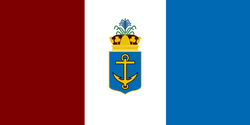 |
| Statistics |
|
| Key topics |
| Provinces |
|
Burgundie portal |
Sudmoll is part of the Burgoignesc Overseas Territory Assembly's Polar Burgundies geographic designation. Burgoignesc Overseas Territory Assembly is a constituent country equivalent of Burgundie with its own assembly, prime minister, budget, and laws. Burgundie's national governmental influence is limited to subsidies, education, and security, however, its financial and cultural institutes cast a long shadow across Sudmoll.
Sudmoll is a province within Burgoignesc Overseas Territory Assembly with its own semi-elected Governor-Epistates, representative legislative body, and court system.
Sudmollians are Burgoigniacs/Burgoignix with complete civil and economic rights, and citizenship (political rights) under the same federal service criteria as all residents of Burgundie. Burgoignesc is the official language but Austral Valloise and Burgoignesc are both in use. However, there was a time during the 1960s and 1970s when children were forbidden to speak Austral Valloise in schools. Austral Valloise is now taught in schools; it is sometimes even a requirement for employment.
Provincial executive
The provincial executive is the Governor-Epistates. Three candidates are elected by a single transferable vote election held every 5 years, the three candidates are presented to the Court of St. Alphador and the next Governor-Epistates is chosen from these candidates. If the citizenry rejects the selection, a run-off election is held with the remaining two candidates.
Provincial legislature

Like the Citizens Court of the National Assembly (Burg. La Assemblee de Ciutadans de l'Assemblee Nacional, ACAN), The Sudmolloise Citizen's Court of the Provincial Assembly is a unicameral legislator. It makes provincial law, has the power of the provincial purse, and has the power of impeachment, by which it can remove sitting members of the provincial government. The Assembly has three seats for each province, one for the Burgoignesc Overseas Territory Assembly's Sudmoll liaison, 3 for the clergy, 3 seats reserved for municipal leaders, and 3 for a rota of private business leaders. On 6 occasions throughout the year 3 more seats are opened to the public to debate topics that are not on the annual legislative agenda.
Administrative divisions and local governance
Military
| Fort St. Amaund Okatian Sea Joint Maritime Patrol Station | |
|---|---|
| | |
| Site information | |
| Owner | Burgoignesc Security Forces |
| Operator | Navy of Burgundie |
| Controlled by | Burgoignesc Australis Combined Forces Command, Western Sector |
| Condition | Operational |
| Site history | |
| Built | 1922 |
| Garrison information | |
| Occupants | Navy
Vocivine National of Burgundie
|
| Fort St. Giles | |
|---|---|
| | |
| Site information | |
| Owner | Burgoignesc Security Forces |
| Operator | Army of Burgundie |
| Controlled by | Burgoignesc Australis Combined Forces Command, Western Sector |
| Condition | Operational |
| Site history | |
| Built | 1973 |
| Garrison information | |
| Occupants | Foreign Legion
|
Sumoll falls under the Navy's Absurian Australis Command, the Army's Absurian Australis Command, the Royal Air Service of Burgundie's Peratra-Australis Command, and the Vocivine National of Burgundie's Polynesian-Peratra Command. Sudmoll's strategic location means it is a major military hub for all branches of the Burgoignesc Security Forces with large basing facilities existing for the army (in particular the I Division, Foreign Legion), navy, Royal Air Service, and Vocivine. Sudmoll is the home of the Navy's Absurian Australis Command Admiral's Administrative Department, Rapid Reaction Force AbsCom and its Rapid Deployment Group 2 Burg: Groupement Disembarkement Rapide no. 2 and Carrier Strike Group Australis. These assets are stationed at Fort St. Amaund which it shares with the Vocivine National of Burgundie, and the Revenue Guard. The army maintains the I Division, Foreign Legion in Fort St. Giles, which it shares with the National Gendarmerie of Burgundie. The Royal Air Service of Burgundie operates Fort St. Martine which it shares with the Hyperthalatton.
Emergency response

Sudmoll is under the jurisdiction of the Sudmoll Regiment of the Australis Division of the Departmental Gendarmerie. The Sudmoll Battalion has 3 companies and an HQ section.
Sudmoll is under the jurisdiction of the Sudmoll Regiment of the Australis Division of the Departmental Constabulary. The Sudmoll Battalion has 3 companies and an HQ section.
Sudmoll is under the jurisdiction of the Grand Station Cathay of the Revenue Guard, the Australis Financial Crimes Division, 5th Cutter Pod, 2nd Life Saving Squadron, and 3rd Maritime Incident Management Team (Burg: Equipe Gestion des Crises Maritime (EGCM)) are stationed in Sudmoll.
Sudmoll is under the jurisdiction of the Australis Command of the Fire Seneschalcy of Burgundie. The Sudmoll Battalion has 2 fire companies, one investigation platoon, one incident management team, and an HQ section.
Sudmoll is serviced by 12 clinics, 8 pharmacies, 9 surgeries, and 1 level III hospital. Those needed a higher level of specialty care are brought to the naval hospital at Fort St. Amaund.
Sudmolle is the headquarters of the Ocean of Cathay Maritime Prefecture under Prefecture marítime Rear Admiral Elodie Marchon-Bliesee.
There are currently two Sociolance teams on Sudmoll, but they have only been in operation since 2031 and there are 4 more in training, due to be qualified in late 2036.
Society
| This article is part of a series on the |
| Culture in Burgundie |
|---|
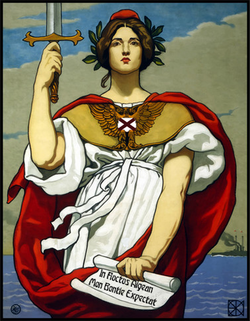 |
| Society |
| Arts and literature |
| Other |
|
Burgundie portal |

Self-reported ethnic origin in Placename (2035)
Sudmoll enjoys complete religious freedom and is a thriving polity of religious observation. The most common religions practiced in Sudmoll are reported to be Mercantile Reform Protestantism at 35.3%, other forms of Protestantism at 18.2%, Masa Church at 14.2%, Catholicism at 9.5%,agnostic or nonreligious at 18.4%, and other/animist at 4.4%.
Education is highly valued in Sudmoll, with a robust system that caters to both academic and vocational aspirations. The island boasts a network of primary and secondary schools, providing quality education to all children. The Sudmoll Institute of Technology (SIT) has become a nationally revered research and innovation in diverse fields, from renewable energy to marine science. This emphasis on education has cultivated a skilled workforce, contributing to the island's economic development and social progress. Sudmolloise are renowned for their warm hospitality, embodied in the concept of "aloha," which signifies love, compassion, and interconnectedness. This spirit of aloha permeates social interactions, fostering a sense of community and shared responsibility. The Iti people's deep connection to their land and sea is evident in their reverence for nature and their commitment to environmental sustainability. This harmonious relationship with the environment is reflected in their sustainable agricultural practices, eco-tourism initiatives, and conservation efforts. Family and kinship ties are the cornerstone of Sudmolloise society. The extended family unit, often spanning multiple generations, provides a strong social safety net, offering emotional, financial, and social support. Traditional values such as respect for elders, communal decision-making, and sharing of resources are still cherished, fostering a sense of belonging and continuity.
Sudmolloise cuisine is a tantalizing fusion of Polynesian, Burgoignesc, and Dolongese flavors. Fresh seafood, caught daily by local fishermen, is a staple, often prepared with coconut milk, lime juice, and tropical spices. Taro, yams, and breadfruit are transformed into savory dishes and sweet desserts. The influence of Burgoignesc cuisine is evident in the island's pastries, breads, and cheeses, while Dolongese flavors add a touch of exoticism to the culinary palette.
Sudmoll's artistic traditions are a vibrant expression of its cultural identity. Traditional crafts like wood carving, weaving, tattooing, and jewelry making continue to flourish, passed down through generations. Contemporary artists draw inspiration from both Polynesian motifs and global trends, creating unique works that reflect the island's evolving cultural landscape. Literature, both oral and written, plays a crucial role in preserving Iti history, mythology, and cultural values. Modern Sudmolloise writers explore themes of identity, belonging, and the challenges of navigating a rapidly changing world. The island's architecture is a testament to its diverse cultural influences. Traditional Polynesian fale (houses) coexist with colonial-era buildings and modern structures. The iconic Oparo Nui Cathedral, a masterpiece of Gothic Revival architecture, stands as a symbol of the island's Christian heritage. Physical Prowess and Community Sports play a vital role in Sudmolloise society, fostering community spirit and promoting physical fitness. Rugby, soccer, and outrigger canoeing are popular pastimes, with Sudmoll fielding competitive teams in regional and international events. The island's pristine beaches and turquoise waters attract surfers, divers, and snorkelers from around the world, while hiking trails through lush rainforests offer opportunities for adventure and exploration. Several symbols hold deep cultural significance for the Iti people. The tiare flower, a fragrant white blossom, is a symbol of beauty, love, and hospitality, often used in garlands and adornments. The turtle, revered for its longevity and wisdom, represents good luck and protection. The Marquesan cross, a stylized cross motif found in traditional art and tattoos, embodies the interconnectedness of the physical and spiritual realms.
Tehoe

Tehoe (Æng. The bond, or the covenant) are a Thračician-Polynesian creole culture. The Thračicians served in the fleets of the Duchy of Bourgondi for much of the 17th-19th centuries and were rewarded for their service with small Patroonships in Sudmoll. These Thračician patroons begat with the local Polynesian women of the island and by the 1780s there was a strong Tehoe culture emerging. Because of the nature of their work, the men were often away at sea so they were not present to impart many of their Thračician customs and traditions, but some did persist. The singing of Bećarac is immensely popular in both the native Thračician language and also those translated or written in the Burgoignesc language. During observations of patriotism some Thračicians wear elements of the Thračician national costume with influences from their native Polynesian culture.
Economy
Standard of living and employment
Because Sudmoll's economy is a high-low mix of sectors from research to traditional fishing and herding, opportunities abound for Iti at all skill and education levels, which has helped the islands maintain a fairly steady unemployment rate of around X% for the last decade. Burgundie's high emphasis on education translates to a particularly educated and skilled workforce, leading to lower unemployment compared to less educated countries in Australis. The islands' economic diversity cushions against overreliance on any single industry, which has demonstrably made the island more resilient during downturns. Since Burgundie strives for Total Economic Engagement and espouses equal rights and opportunities regardless of gender, race, ethnicity, ability, or background, Sudmolls benefits from improved access to education and training, impacting employment prospects across various fields.
Agriculture
Taro, yams, breadfruit, coconut palm, mangoes, pineapples, guavas, passion fruit, and bananas are the staples of Sudmoll's agricultural production. The coconut palm, a symbol of Polynesian culture, is a versatile resource, providing coconut meat, milk, oil, and coir (fiber) for culinary, crafting, and industrial purposes. The island's agricultural exports are exported to neighboring Polynesian islands and the Burgoignesc Metropole.
Tourism and hospitality
-
Unnamed Daxian ruin in western Sudmoll
Sudmoll has, in recent years become known for whale watching: Humpback whales come and reproduce here between July and October within easy sighting distance from the beaches. The island's unspoiled nature in the form of its lush forests and numerous wildlife, its Daxian and Loa ruins and various extravagant villas constructed on the island by rich Burgoigniacs have drawn visitors to the island since the 19th century, with various writers, poets and painters bringing the island to the public eye over the years. Permanent inhabitants of Sudmoll have spoken against the increased tourism in the recent decades due to the risk the expanded tourism industry might bring to the unspoiled nature of the island.
Logging/Mineral extraction
Pounamu obsidian Sudmoll's geological formations have yielded a diverse array of mineral resources, including bauxite, phosphate, rare earth elements, precious metals, pounamu (greenstone), and obsidian. Leveraging advanced technologies and sustainable practices, Sudmoll's mining sector has become a model of efficiency and environmental responsibility, contributing significantly to the island's economic growth and export earnings.
Bauxite, the primary ore of aluminum, is Sudmoll's most abundant and valuable mineral resource. The island's rich deposits, formed over millions of years through weathering of volcanic rock, are estimated to contain over 500 million tonnes of bauxite. Since the late 1940s, mechanized open-pit mining has been employed to extract bauxite, and since the 1990s, automation has further enhanced efficiency and reduced environmental impact. In 2035, Sudmoll produced an estimated 15 million tonnes of bauxite, with an export value of approximately $750 million. The bauxite industry employs around 2,000 people directly, and thousands more indirectly through related industries such as transportation and processing. Sudmoll's phosphate deposits, formed from ancient marine sediments, are another significant mineral resource. Phosphate is a key ingredient in fertilizers, and Sudmoll's high-quality phosphate rock is in demand in agricultural markets worldwide. The phosphate industry in Sudmoll has undergone significant modernization in recent decades, with the introduction of automated mining and processing techniques. In 2033, the island produced an estimated 5 million tonnes of phosphate rock, with an export value of approximately $250 million. The industry employs around 1,000 people directly. Sudmoll's volcanic geology has also endowed the island with significant deposits of rare earth elements (REEs). These elements are essential components in a wide range of high-tech products, including smartphones, electric vehicles, and wind turbines. Mining of REEs in Sudmoll began in the early 2000s, and the industry has since grown rapidly, driven by the increasing global demand for these critical minerals. In 2035, Sudmoll produced an estimated 500 tonnes of REEs, with an export value of approximately $50 million. The REE industry is highly specialized and employs around 500 highly skilled workers. Pounamu, a type of greenstone found only in Polynesia, holds deep cultural significance for the Iti people. This precious stone, revered for its beauty and spiritual properties, is used to create intricate carvings, jewelry, and tools. The mining of pounamu in Sudmoll is carefully regulated to ensure the preservation of this cultural treasure. Small-scale mining operations, often run by Iti families, use traditional hand tools to extract the stone, which is then sold to local artisans and exported to international markets. Obsidian, a naturally occurring volcanic glass, is another valuable resource found in Sudmoll. This sharp and durable material was prized by the ancient Iti people for making tools, weapons, and ceremonial objects. Today, obsidian mining in Sudmoll is a small-scale industry, primarily supplying local artisans and collectors. However, the island's obsidian is gaining recognition in international markets for its unique color and quality. While not as abundant as bauxite or phosphate, Sudmoll also possesses deposits of precious metals such as gold and silver. These metals are primarily extracted as byproducts of bauxite and REE mining. The gold and silver produced in Sudmoll are primarily exported to international markets, where they are used in jewelry, electronics, and other industrial applications.
Fishing and fisheries
Distant-water fishing fleet
Sudmoll's distant-water fishing fleet, primarily operated by large Burgoignesc fishing corporations (namely: Bertrand Oceanic Fishing, Dubois Maritime Fleets, Lefebvre Grand Fishing, Rousseau Marine Armada, and Moreau Fishermen), targets a wide range of species in the rich fishing grounds of the Polynesian and Okatian Seas. These vessels are equipped with advanced technology, including sonar, GPS, and fish aggregating devices, enabling them to locate and harvest vast quantities of fish efficiently. They fish tuna, swordfish, and marlin.. These fish are processed onboard the vessels and then exported to international markets, generating significant revenue for the operating companies and contributing to Sudmoll's export earnings.
Local commercial fishing
The local commercial fishing industry in Sudmoll is characterized smaller-scale operations, primarily targeting coastal and reef fish for domestic consumption and export to neighboring islands. These fishermen often use traditional methods such as handlining, spearfishing, and gillnetting, passed down through generations. The most commonly caught species include snapper, grouper, and parrotfish. These fish are sold fresh at local markets or processed into dried or salted products for export. The local commercial fishing industry plays a crucial role in providing food security for the island's population and supporting the livelihoods of many Iti families.
Aquaculture
Aquaculture is a new aspect for the economy of Sudmoll. The commercialization of the pearl and nacre industry was first attempted in the 1990s and met with stiff resistance by the cottage industry that existed around it. The final push was in 2014 when conservation groups succeeded in getting the local legislature to put a 10-year moratorium on "wild" fishing, pearl-diving, and other forms of gathering seafood by hand.
This was considered an Occidentalization of the cottage industries, concentrating power in hands of a few people who were friendly to the Governor-Epistates at the time. Two court cases have been brought against the law banning "wild" marine capture. In both cases the locals lost to overwhelming evidence that the new approach was much better for the environment and since the supply of aquaculture products was most consistent and forecastable much better for exporting concerns.
In the 2020s aquaculture exploded as the pristine marine coastal ecosystem attracted millions of dollars of investment from the Burgoignesc Metropole and the Levantine Union. The aquaculture sector employs about 250-300 people directly and brings in about $55-65 million a year not including ongoing investments.
Mariculture
-
Raimana et Fils Inc. seaweed farm
Mariculture as a commercial effort is a growing business sector in Sudmoll. There are now two artificial reefs or sea ranches farming Paua farms that produce Paua flesh, pearls and nacre (mother of pearl). Other mollusks are farmed here and sold as a local food source. There is a fish oil extraction and fishmeal production ship that processes all of the leftovers or unsellable fish and exports fish oil and fish meal. It circles the fish farms and collects it's load for an "offloading fee". There is also a seaweed forest and an oyster farm both owned by Raimana et Fils Inc. The sector generates around $18 million a year and employs about 50 people directly.
Pisciculture
Pisciculture in Sudmoll is focused mostly on the raising of Awa, Flatfish, tamure. Open-ocean cage culture is the only allowable form of pisciculture in Sudmoll and theey produce about 3-400 tonnes of fish each year.There are also two smaller fish farms that specialize in reef fish for aquariums and cleaner fish production. The Pisciculture sector brings in about $35 million each year to the island and employs 173 people directly.
Artisanal/heritage industries
-
Tā moko, Iti tattooing
-
Haka dancers
-
Fakaseasea dancer
-
Opal jewelry
The artisanal and heritage industries encompassing traditional crafts like wood carving, weaving, Tā moko (native tattoos), and jewelry making, as well as cultural performances such as music, dance (especially the Haka and Fakaseasea), storytelling, and authentic Iti cuisine. These industries provide livelihoods for approximately 5,000 Iti people, roughly 10% of the island's workforce. They are valued at $20 million in annual exports. These practices are deeply intertwined with Iti culture, serving as a tangible expression of the island's history, traditions, and spiritual beliefs. By preserving and promoting these industries, the Government of Burgundie has safeguarded the cultural heritage of the Iti people in a mutually beneficial way. The Sudmolloise government recognizes the importance of these sectors and has since the end of the Second Great War implemented initiatives like financial assistance programs, cultural centers, and festivals to support their growth and development, ensuring a sustainable future for both the Iti people and the island's unique heritage which has been a huge driver for the tourism industry.
Trade
| Port Nova Martillia | |
|---|---|
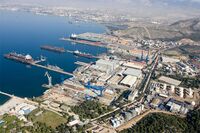 | |
| Location | |
| Country | |
| Details | |
| Opened | 1949 |
| Employees | 550 |
| Statistics | |
| Vessel arrivals | 179 |
| Annual cargo tonnage | 805.219 tonnes |
| Annual revenue | ₮25 million |
Port Nova Martillia is a small container port that can accommodate two feeder sized ships at once. It is used to export the agricultural goods from the island but also to supply the locals with sustenance since the island is not self-sufficient. Since opening relations with Stenza the port has increased its activity almost twofold. Smaller packet freighters are a much more common sight. Almost all of the meager exports from Sudmoll now go to markets in Stenza.
Trade is handled throught the Okatian Island Trading Company (OITC), a joint stock company that is owned 20% by Caphiria, 20% by Burgundie, 20% by O’Shea Container Shipping, and the remaining shares are publically traded. The OITC handles the imports and exports from Sudmoll and Caphirian Escal. It runs a regular route from Port Lacomopoles in Burgundie, Sybaesa Port in Caphiria, Port Bianca in Cartadania, Port TBD, Burgoignesc Equitorial Osteiecia, Ku'umata, Takatta Loa.
The main trading partners are the Burgoignesc Metropole for about 40% of imports and about 25% of exports. The other main trading partners are the other Polynesian islands, Caphiria, and Takatta Loa.
Infrastructure
Transportation
Railways: Sudmoll uses Standard gauge, 1,435 mm (4 ft 8+1⁄2 in) for both freight and passenger rail. Equatorial Express (Burg: Express Equatorial) is the public sector, intercity, passenger rail operator in Equatorial Ostiecia, Port de Vent, and Sudmoll. It owns and operates all rail corridors, rights of way, and rolling stock that serve this purpose. Highways: The country has a relatively extensive road network, connecting major urban areas and economic centers. However, the quality of roads varies significantly. While major highways are paved and well-maintained, many rural roads are unpaved and can become difficult to navigate during the monsoon season. The government has undertaken projects to improve and expand the road network, with funding from international donors. Maritime: RORO ferry service connects Sudmoll with the Tierradorian Saukhin Islands, Urcean Rapa Rapa, Daxian Truk, and the Peratran mainland. Airports: There is one international airport in Sudmoll, Sudmoll International Airport and Airbase. It serves Burgoignesc domestic and international airlines, providing connections to major cities in Polynesia and beyond.
Lighthouses and beacons
There are 4 active lighthouses, all of which have been automated as AIS relays and beacons in Sudmoll. Burgundie has also sponsored a Global Maritime Distress and Safety System repeater and beacon on the island.
Energy and electricity
The BORA Waste to Energy Compact went into effect in 2027 with construction of a Waste to Energy power plant starting in 2028. The one plant built in Sudmoll generates approximately 104,000 kWh/day with a waste reduction capacity of 110,000 kg/day.
Sudmolloise consume 41,499,420 kWh of electricity each year. Per capita, this is an average of 2,242 kWh. Sudmolloise consume 188,681,640 kgs of oil equivalent each year. Per capita, this is an average of 10,194 kgs of oil equivalent.
Sudmoll imports its petroleum and has no local refinery or production. Civilian daily consumption of imported oil products was 5,430 barrels in 2025, which constitutes 70% of energy generation for the island's inhabitants. A waste-to-energy plant was constructed in 2003 and provides the remaining 30% of power generation. It also consumes about 83% of the waste generated on the island. The syngas byproduct is increasingly becoming one of Sudmoll's most valuable exports. There is a rising interest in Agrinergie but a study found that the total potential of the island could only offset the need to meet the current energy consumption, which will never be realized. There has been a mild interest, in residential and commercial solar energy but there isn't a financial capability by the vast majority of residents and businesses to make the initial investments even with current government subsidies. It is estimated that the total solar energy generation capacity on the island is about 4KWs and there is no expectation of that drastically increasing in the next 3-5 yrs.
Through an infrastructure investment grant, the Levantine Union has committed ₮8 million to construct tidal power generators, but the project is currently stalled by local fishermen who are concerned about the disturbances the generators will cause to their livelihood. The project is still expected to move forward and the projected completion date is 2029. A feasibility study was conducted and determined that solar would be unreliable due to the long monsoon seasons, and nuclear was too expensive for the demand.
Agrinergie

Main article: Agrivoltaics
Since 2014 Sudmoll has seen rise in the interest in agrivoltaics. There is a 1MW solar installation with agriculture activities on 2 hectares (5 acres) of land owned by a local cooperative that was funded by a grant from the Royal Academy of Sciences. The farm grows melons, chilies, and cucumbers which are sold at the local market. In 2019, an agrivoltaic system was built on a shrimp farm, funded by a local block grant. According to data collected by the Ministry of Energy's Department of Sustainability's Office of Energy Resiliency's Local Initiatives Branch, the results of their pilot project indicate that water consumption has been reduced by 75% and other benefits such as shading for workers as well as a lower and stable water temperature for better shrimp growth.
In 2024, a subsidy program was established for participants who can provide 1 hectare of undeveloped, arable, and viable land and a business plan to farm/ranch on the land with shade-tolerant crops can receive up to $150,000 towards the installation of a solar array.
Phone service and internet
Phone service is provided by Great Seas BurgunMobile, Vintage Wireless, and National Wireless Services, which have 47, 27, and 15 towers respectively across the island. 100% of the island and its population are covered by at least one of the services, National Wireless Services covering the less densely populated and therefore less profitable areas. Copperwire and fiberoptic phone still exists, one or both are required for all municipal and emergency response connections, and people along the route are allowed to buy in, but during emergencies their calls are de-prioritized in favor of emergency response calls, which is the same with mobile service on the island.
Highspeed internet service is provided by Great Seas BurgunMobile, Vintage Wireless, and Extron Burgundie Mobile. Residential internet speeds average 2-3 gigabits while commercial speeds are typically higher in the 3-4 gigabit range.
See also
- Pages using duplicate arguments in template calls
- Pages with non-numeric formatnum arguments
- Pages using infobox settlement with possible nickname list
- Pages using infobox settlement with no map
- Pages using infobox settlement with no coordinates
- Pages with broken file links
- Pages using country topics with unknown parameters
- Burgundie
- Sub-national Regions in Burgundie
- Islands
- Burgoignesc islands

















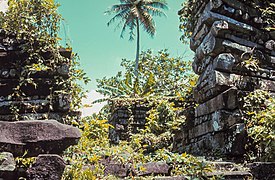


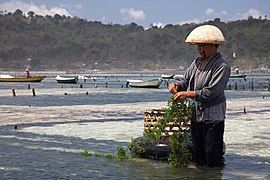

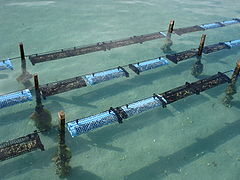




![Hei-tiki pendant made out of Pounamu, Pounamu jewelry is culutrally significant to Sudmoll]]](https://upload.wikimedia.org/wikipedia/commons/thumb/4/43/Pendanr_%28hei-tiki%29_LACMA_M.71.73.156_%281_of_2%29.jpg/138px-Pendanr_%28hei-tiki%29_LACMA_M.71.73.156_%281_of_2%29.jpg)



